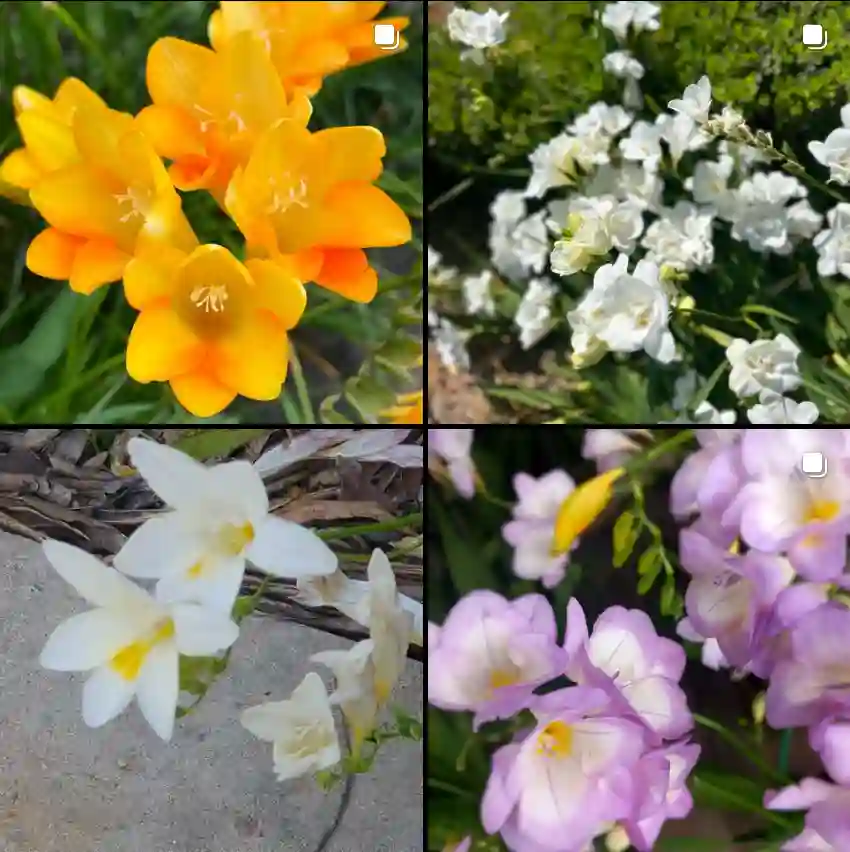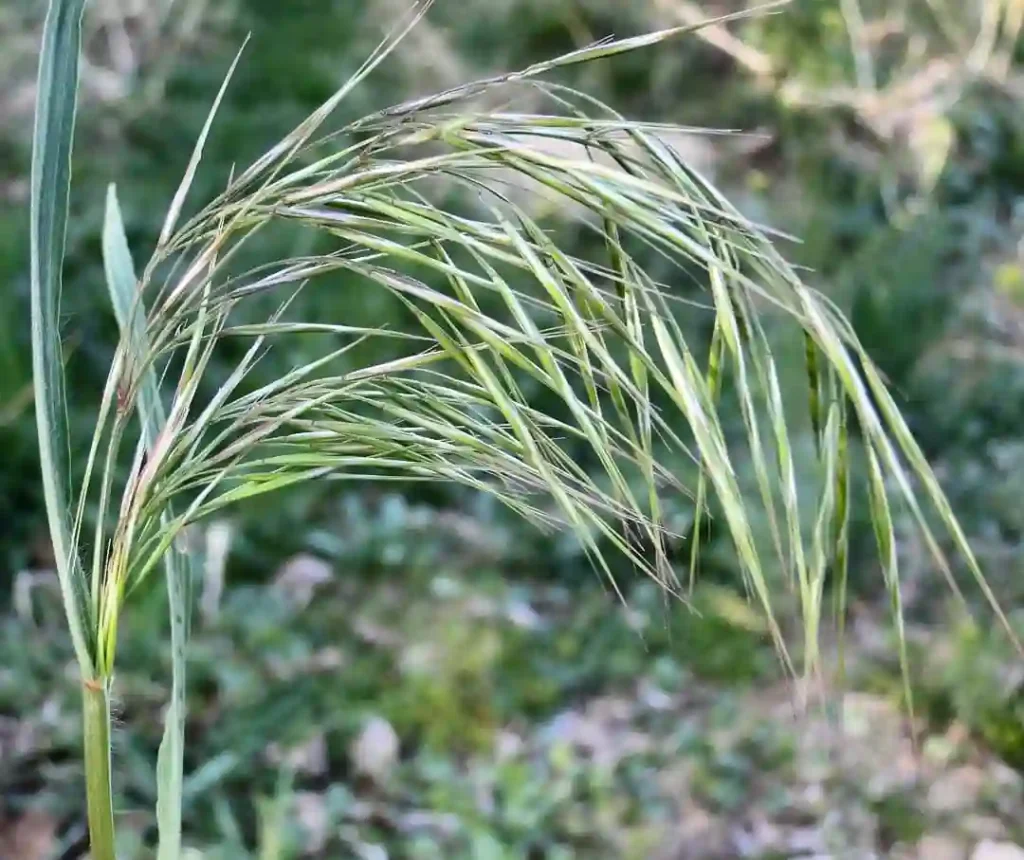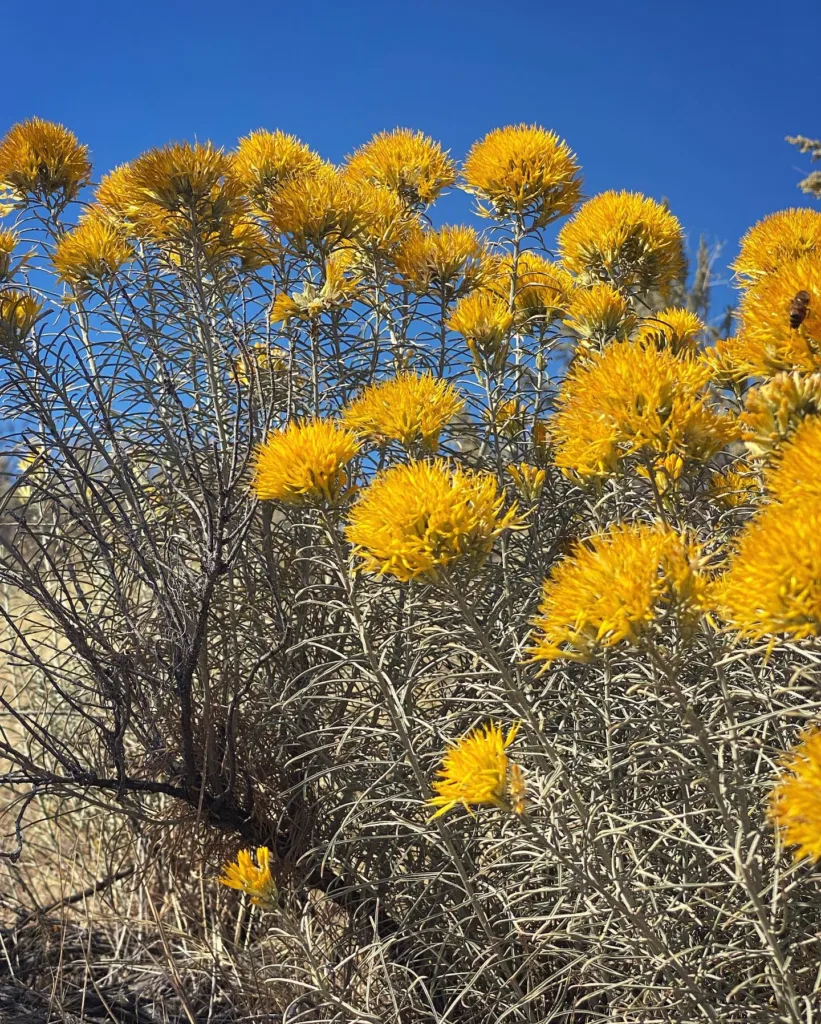
1. Introduction to Monstera Lechleriana: A Distinctive Climber
1.1. What is Monstera lechleriana?
The Monstera lechleriana is a less commonly encountered, yet equally captivating, species within the Monstera genus, beloved by aroid enthusiasts for its distinctive foliage and vigorous climbing nature. Native to the humid rainforests of Central and South America, this plant is characterized by its elongated, somewhat narrower leaves that are typically a deep, rich green. Unlike the broad, heavily fenestrated leaves of the Monstera deliciosa, the M. lechleriana develops its signature fenestrations (splits and holes) in a more subtle and elongated fashion, often forming a single row of oval-shaped holes along the midrib as it matures. Its elegant appearance and impressive climbing ability make it a unique addition to any indoor plant collection.
1.2. Reasons for its Appeal
M. lechleriana appeals to collectors for several reasons:
- Unique Fenestration: Its distinct, often single-row fenestrations provide a different aesthetic from the more common Monsteras.
- Vigorous Climbing Habit: It’s a strong climber, making it ideal for moss poles and creating lush vertical displays.
- Deep Green Foliage: The rich green leaves offer a classic tropical look.
- Relative Rarity: While not as rare as some variegated Monsteras, it’s less common than M. deliciosa, adding to its appeal for collectors.
2. Origins and Distinguishing Characteristics
2.1. Native Habitat
Monstera lechleriana is indigenous to the tropical rainforests of Central and South America, thriving in regions like Costa Rica, Panama, and parts of the Amazon basin. In its natural habitat, it typically grows as an understory plant, climbing up large trees to reach filtered light, developing impressive aerial roots to cling to surfaces and absorb moisture and nutrients from the humid air. Understanding its native environment is key to replicating ideal growing conditions indoors.
2.2. Leaf Morphology and Fenestration
The leaves of Monstera lechleriana are generally more elongated and narrower than those of Monstera deliciosa. They are a beautiful deep green, often with a slightly glossy finish. As the plant matures and receives adequate light and support, the leaves begin to develop fenestrations. These typically appear as a single row of oval to elongated holes or splits running parallel to the central vein, rather than the more random and numerous fenestrations seen in M. deliciosa. The depth and number of these fenestrations increase with the plant’s age and maturity.
2.3. Growth Habit and Rate
Monstera lechleriana is a very vigorous climber. In its natural environment, it can ascend considerable heights, utilizing its strong aerial roots for attachment and support. Indoors, it will readily climb a moss pole, trellis, or other sturdy support structure. Providing vertical support is crucial not only for aesthetic display but also for encouraging the plant to produce larger, more mature leaves with well-developed fenestrations. Its growth rate is generally moderate to fast under optimal conditions, especially during the warmer months.
3. Comprehensive Care Guide: Nurturing Your Lechleriana
Cultivating a thriving Monstera lechleriana requires attention to specific environmental factors to mimic its native rainforest habitat.
Table 1: Quick Care Guide for Monstera Lechleriana
| Care Factor | Requirement Description |
|---|---|
| Light | Bright, indirect light (e.g., East/West window, South/West window with sheer curtain). Avoid direct sun. |
| Temperature | Ideal range: 18-27°C (65-80°F). Avoid sudden drops below 15°C (59°F). |
| Humidity | Prefers high humidity, 60-80% or higher. |
| Watering | Water when top 1-2 inches of soil are dry. Allow excess to drain. Less in winter. |
| Soil | Well-draining, airy, rich in organic matter (aroid mix, or potting mix + perlite + orchid bark). |
| Fertilization | Balanced liquid fertilizer, diluted to half-strength, monthly during spring/summer. Reduce in fall/winter. |
| Repotting | Every 1-2 years, or when root-bound, in spring. Increase pot size slightly. |
3.1. Light Requirements
Monstera lechleriana thrives in bright, indirect light, similar to its natural habitat where it grows under the canopy of larger trees. Place it near a window that receives plenty of bright, filtered light, such as an east or west-facing window. A south-facing window can also work if the light is diffused by a sheer curtain to prevent direct sun exposure. Direct sunlight, especially harsh afternoon sun, can scorch its leaves, leading to brown, crispy spots. Conversely, too little light will result in leggy growth, smaller leaves, and a lack of fenestrations. Rotate the plant periodically to ensure even growth.
3.2. Temperature and Humidity
As a tropical plant, Monstera lechleriana prefers warm, stable temperatures. The ideal range is between 18-27°C (65-80°F). It’s crucial to protect the plant from temperatures dropping below 15°C (59°F), as cold can stress the plant and inhibit growth. Avoid placing it near drafts from open windows, air conditioning vents, or heating units.
High humidity is essential for M. lechleriana to thrive, ideally between 60-80%. In dry indoor environments, consider using a humidifier to maintain consistent moisture. Other methods include placing the pot on a pebble tray filled with water (ensuring the pot doesn’t sit in the water) or grouping it with other plants to create a humid microclimate. Signs of insufficient humidity include browning leaf edges or tips.
3.3. Watering Practices
The key to watering Monstera lechleriana is consistency and allowing for proper drainage. Water thoroughly when the top 1-2 inches (2.5-5 cm) of the soil feels dry to the touch. Ensure that any excess water drains completely from the bottom of the pot. Never let the plant sit in standing water, as this is a primary cause of root rot, which can be fatal. During the active growing season (spring and summer), you may need to water more frequently. In the cooler fall and winter months, reduce watering frequency as the plant’s growth slows down. Using filtered water or rainwater is beneficial, as tap water can sometimes contain minerals that build up in the soil over time.
3.4. Optimal Soil Mix and Repotting
A well-draining, airy, and rich potting mix is paramount for Monstera lechleriana. This mimics the loose, organic-rich soil found in its native rainforest floor. A good aroid mix is ideal, or you can create your own by combining:
- High-quality potting soil (about 50%)
- Perlite or pumice (about 20%) for aeration and drainage
- Orchid bark (about 20%) for chunkiness and improved air circulation
- Coco coir (about 10%) for moisture retention without compaction
This blend provides excellent drainage while retaining enough moisture for the roots.
Repotting: Repot your Monstera lechleriana every 1-2 years, or when you notice signs of it becoming root-bound (roots growing out of drainage holes, soil drying out very quickly). The best time for repotting is in spring, at the beginning of its active growing season. When repotting, choose a pot only 1-2 inches larger in diameter than the previous one, ensuring it has ample drainage holes. Avoid overly large pots, as they can hold too much moisture and lead to root rot.
3.5. Fertilization Strategies
During the active growing season (spring and summer), fertilize your Monstera lechleriana monthly with a balanced liquid fertilizer, diluted to half the recommended strength. This provides essential nutrients for robust growth. Reduce or cease fertilization during the fall and winter months when the plant’s growth naturally slows down. Over-fertilization can lead to salt buildup in the soil, which can burn the roots and damage the plant. Always water the plant thoroughly before fertilizing to prevent root burn.
4. Propagation Techniques: Expanding Your Collection
4.1. Stem Cuttings
Propagating Monstera lechleriana is a straightforward and rewarding process, most commonly done via stem cuttings. The best time for propagation is during the spring or early summer when the plant is actively growing.
- Select a Healthy Stem: Choose a healthy, mature stem section that has at least one node (the bump on the stem where a leaf or aerial root emerges) and at least one leaf. A cutting with 2-3 nodes and leaves often has a higher success rate.
- Sterilize Tools: Use sharp, sterilized pruning shears or a knife to make a clean cut. Sterilizing prevents the spread of diseases.
- Make the Cut: Cut just below a node. Remove any leaves that would be submerged in your rooting medium (water or soil) to prevent rot.
- Rooting Medium Options:
- Water Propagation: Place the cutting in a clear jar of water, ensuring the node is submerged. Change the water every few days to keep it fresh and prevent bacterial growth. Roots typically emerge within a few weeks.
- Sphagnum Moss: Place the cutting in moist sphagnum moss. This medium provides excellent aeration and moisture retention, often leading to robust root development.
- Soil: Plant the cutting directly into a small pot filled with a well-draining potting mix. Keep the soil consistently moist but not soggy.
- Provide Humidity and Warmth: Regardless of the rooting medium, place the cutting in a warm spot with bright, indirect light. High humidity (e.g., inside a clear plastic bag or propagation box) will significantly aid rooting.
- Potting Up: Once the roots are a few inches long (for water or moss propagation), or new leaf growth is visible (for soil propagation), the cutting is ready to be transitioned to a permanent pot with a suitable potting mix.
5. Troubleshooting Common Issues: Pests, Diseases, and Environmental Stress
While generally resilient, Monstera lechleriana can encounter a few common problems. Early detection and prompt action are key to maintaining a healthy plant.
Table 2: Common Problems & Troubleshooting for Monstera Lechleriana
| Problem | Symptoms | Solutions/Treatment |
|---|---|---|
| Yellowing Leaves | Older, lower leaves turning yellow. | Overwatering (most common), nutrient deficiency, natural aging. Adjust watering, fertilize, check roots. |
| Brown Crispy Edges/Tips | Leaves browning and feeling crispy at edges. | Low humidity, underwatering, salt buildup. Increase humidity, adjust watering, flush soil. |
| Drooping Leaves | Leaves losing turgor, looking limp. | Underwatering (most common), overwatering (roots rotting), cold shock. Check soil moisture, inspect roots, ensure warmth. |
| No Fenestrations/Small Leaves | New leaves remain solid, smaller than expected. | Insufficient light, immature plant, lack of climbing support. Provide brighter indirect light, offer a moss pole, be patient. |
| Pest Infestations | Visible pests (spider mites, mealybugs, thrips, scale), sticky residue, distorted growth. | Isolate plant, treat with insecticidal soap, neem oil, or appropriate pesticides. Increase humidity. |
| Root Rot | Mushy stem base, black/brown, foul-smelling roots, yellowing/wilting. | Overwatering, poor drainage. Repot, trim rotten roots, improve drainage, reduce watering. |
| Leggy Growth | Long stems with sparse leaves. | Insufficient light. Move to brighter location. Prune to encourage bushier growth. |
5.1. Watering Issues
- Overwatering: The most common cause of problems. Symptoms include yellowing leaves (especially lower ones), black/brown spots, a mushy stem, and a rotten smell from the soil. This leads to root rot.
- Solution: Allow soil to dry out more between waterings. Ensure excellent drainage. If root rot is severe, repot, trim affected roots, and use fresh, well-draining soil.
- Underwatering: Symptoms include drooping leaves, crispy brown edges or tips, and overall dull foliage.
- Solution: Increase watering frequency and ensure thorough watering when the top soil layer is dry.
5.2. Light Issues
- Insufficient Light: Results in slow growth, smaller leaves, leggy stems, and a lack of fenestrations.
- Solution: Move the plant to a location with brighter, indirect light. Consider a grow light if natural light is inadequate.
- Too Much Direct Light: Causes scorched spots, brown patches, or fading on leaves.
- Solution: Relocate the plant to a spot with filtered light or use sheer curtains to diffuse intense sun.
5.3. Humidity and Temperature Stress
- Low Humidity: Leads to crispy brown leaf tips and edges.
- Solution: Increase ambient humidity using a humidifier, pebble tray, or by grouping plants.
- Cold Stress: Temperatures below 15°C (59°F) can cause leaf damage, wilting, and overall plant decline.
- Solution: Ensure the plant is in a warm, stable environment and protected from drafts.
5.4. Pests
Common houseplant pests like spider mites, mealybugs, thrips, and scale can affect Monstera lechleriana.
- Symptoms: Visible insects, sticky residue (honeydew), tiny webs, speckled or distorted leaves.
- Solution: Regularly inspect your plant. Isolate infested plants. Treat with insecticidal soap, neem oil, or other appropriate organic pesticides. Increasing humidity can deter spider mites.
5.5. Root Rot
This is a fungal disease caused by consistently wet, poorly aerated soil.
- Symptoms: Yellowing, wilting leaves despite moist soil; mushy, black, foul-smelling roots.
- Solution: Remove the plant from the pot, trim away all rotted roots, repot in fresh, well-draining soil, and adjust watering practices.
6. Conclusion: Enjoying Your Thriving Monstera Lechleriana
The Monstera lechleriana is a truly elegant and rewarding plant to cultivate. Its unique fenestration patterns, vigorous climbing habit, and rich green foliage offer a distinct aesthetic that sets it apart from its more common Monstera relatives. By providing consistent bright, indirect light, appropriate watering, high humidity, stable temperatures, and a well-draining soil mix with adequate climbing support, you can ensure your Monstera lechleriana thrives. While it requires attention to its specific needs, the beauty and growth of this distinctive climbing aroid will undoubtedly bring immense satisfaction and a touch of the rainforest to your indoor space.
If i die, water my plants!



